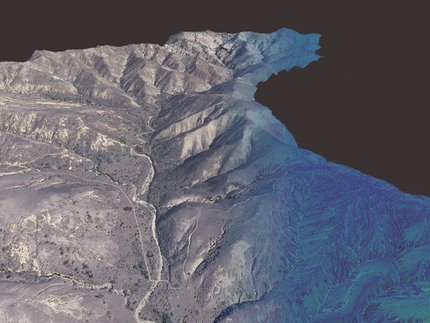Analysis of Digital Elevation Models
Bodo Bookhagen
Digital Topography in the form of Digital Elevation Models (DEMs) describe the shape of the Earth's surface. These often form the basic boundary conditions to understand Earth surface processes, tectonic deformation, and natural hazards. For example, derivatives of DEM describe slope and curvature. This module explores recent methodologic advances in analyzing DEMs to better understand and predict the Earth's surface. Statistical analysis for example of hillslopes, river longitudinal profiles, and glacial expressions are discussed.
We also take advantage of new, high-resolution tri-stereo satellite images (1 m spatial resolution) that can be used to generate 3-5 m DEMs. This digital topography can be used to better identify landslides, debris flows and fault zones – it can also be used to develop methods for automatic geomorphic marker detection. Within this lab course, students are trained in developing and employing algorithms to process and analyze algorithms for airborne and satellite-based digital topography to better decipher geologic markers.

